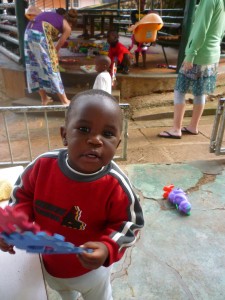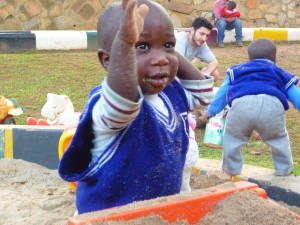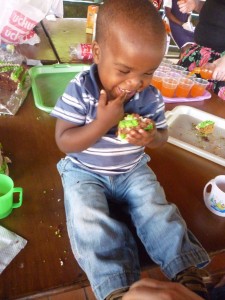Special Features
Notes From India: The Human Rights Law Network (HRLN)
Courtney Schuster
Special Contributor, Blog Entry #1
In a rundown office space in the middle of one of Delhi’s poorest neighborhoods, there is a group of lawyers, activists, and interns slowly trying to change India. Human Rights Law Network (HRLN) is a NGO using public interest litigation, social activism, and training seminars to redirect Indian laws in an effort to better protect prisoners, the disabled, minorities, women, and children. They strive to ensure the right to food, the right to health care, and the right to be treated equally before the law.

Currently, 95% of maternal deaths worldwide occur in Asia and in Africa, with India carrying 20% of the global burden. The vast majority of maternal deaths are preventable and are mostly attributed to causes such as anemia, postpartum hemorrhaging, and unsafe abortions. The Reproductive Rights Initiative at HRLN is trying to lower the maternal mortality rate by enforcing the government-mandated existence of adequate health facilities.
The accessibility of health care facilities in rural areas is one of the main health care problems in India, especially for those who are in the Below Poverty Line (BPL) category. Many health centers are only open a few hours a day and those that are open are under-equipped and understaffed. Often times, people are turned away from health centers due to lack of staffing, supplies, and beds. People either have to hire an expensive private car to take them to another facility or they do not receive medical care at all. Those who are BPL cannot afford to hire a car so they go without medical care; giving birth at home or going without treatment for illness and disease. This is a violation of India’s responsibility under state and international law.
The government created the National Rural Health Mission to ensure that those who are BPL receive health care. It created standards that all public health centers must abide by, including a minimum number of staff must be present at any given time; a minimum number of beds; adequate equipment, tools, and facilities; standards for sanitizing equipment; the presence of unexpired, vital medicines; the administration of family planning services; and blood bank facilities at health centers.
Family planning measures are an important part of government operations in India. Due to overpopulation, crowding, and strains on resources, the federal government mandates that public health centers offer tubal ligations (tubectomies), contraceptives, counseling, and access to safe abortions. State governments across India sponsor Sterilization Camps, where women and occasionally men, undergo tubal ligations or vasectomies. There are instances of women and men undergoing operations without any knowledge or consent of the family planning procedure. There are cases where the procedure failed and women became pregnant with unwanted children. There was even a case in which a hospital prescribed and performed hysterectomies on women on 74% of the women that entered the facilities, all without any examination. HRLN is in the process of bringing all of these instances to the attention of the courts as public interest litigation petitions.
Courtney Schuster is a third-year student at Syracuse University College of Law. She is currently working as an intern in India for the summer. She will be contributing personal blog entries throughout her internship, documenting the challenges of solving human rights issues in international settings.
OTP Weekly Briefing: ICC Prosecutor Reports on Libya Situation to UN Security Council
Notes from Kampala: Spotlight on Sanyu
By Reta Raymond
Associate Special Features Editor
There are nearly two million known orphans in Uganda. Many of these orphans lost their parents to AIDS, or the children were not kept because they were born out of wedlock, or their parents were simply too poor to keep them. Additionally, women who give birth in Uganda have a high mortality rate. This high mortality rate is in part due to the requirement that women in labor must bring their own medical supplies needed for labor, or they will be turned away from hospitals and clinics. Often that will lead to women giving birth outside a medical facility in unsanitary conditions.

While in Kampala, I stayed at Sanyu Babies Home, which is the oldest babies home in Kampala. It runs on private donations and income-generating projects such as the on-campus guesthouse and craft shop. There is no government funding for orphanages in Uganda. Sanyu houses around fifty children, whose ages range from one day to four-years-old. This home has an excellent track record of getting children adopted, fostered, or reunited with their birth families. These children are often found in pit latrines, maternity wards, churches, near wells and on the side of the street. Some of the caretakers believe that some children are delivered to Sanyu to save the child from being sacrificed as part of a traditional “witchcraft” ceremony. They believe that certain beads worn around the children’s stomachs is evidence that a child has been chosen for sacrifice.

Children are generally very well taken care of at Sanyu. There, children are given three meals and two snacks per day. When the children come to Sanyu they are tested for AIDS, receive vaccinations, and are given medical treatment by the resident nurses or taken to a hospital if they require additional care. Many of the children are malnourished, have experienced trauma, or have other health problems when they are brought to Sanyu. These children, live in the equivalent of a middle-class Ugandan home.
However, Sanyu still struggles to provide medical care to the children, because it is difficult to pay their medical bills. When medical bills reach a certain level, the hospital will refuse to care for any more children. This past spring, one of the volunteer caretakers from outside Africa carried pneumonia to the home and infected many of the children. As a result of this outbreak, three children died and many were put in the hospital, which left Sanyu with some debilitating bills. Not only must Sanyu pay for the medical services when a child falls ill, but also for the medical supplies. For example, if a child needs stitches, Sanyu must bring the scissors, gauze, and thread. Therefore, the medical bills can escalate rapidly, and if they do not pay the bill for a long time, the hospital will simply refuse to treat any more of Sanyu’s children. After the pneumonia outbreak, Sanyu worried that they wouldn’t be able to pay the bill before another child would need to visit the hospital.
Sanyu is also unique because it is a somewhat transparent organization. Donors may pay hospitals, electricity bills, and vaccinations directly on behalf of Sanyu. An administrator, whose decisions are subject to a board of director’s approval, runs the home. However, recent criticisms of their financial decisions make me believe that Sanyu may not be free from corruption, which is widespread in Uganda.
Regardless, Sanyu is one of the best places for an orphaned child in Uganda to end up. Many international families, as well as local families, come to Sanyu to be matched with their potential child, and many international and local volunteers come to help care for the children. Many orphanages in Uganda are not nearly so lucky. For example, I visited another orphanage in Kampala where children were not fed one day per week, as a way of budgeting for food. At that orphanage, donations from international visitors were rare, as it is further out of the city and not well known. That orphanage housed over seventy children, with all the boys living in a two-room house without electricity. Furthermore, the children had to sleep two or three to a mattress.

—
For more information on how to help Sanyu, either by donating items or money or becoming a volunteer visit: http://www.sanyubabies.com.
Additionally, a $7 donation to “Mercy for Mamas” will buy a “mama’s kit” which provides an expectant mother with all the medical supplies she will need at the hospital to deliver her baby safely and in sanitary conditions. Since Ugandan medical facilities do not provide medical supplies to treat their patients, hospitals and clinics turn women away if they do not bring the proper medical supplies necessary to deliver the baby. For more information, visit: http://www.mercyformamas.com.
Another source of information is the child advocacy blog, “A Child’s Voice.” This blog posts on a variety of issues affecting children in Uganda, read more at http://a-childs-voice.org/.
Notes from Kampala: Food as a Vehicle for Culture
By Reta Raymond
Associate Special Features Editor
After writing about some of the brighter aspects about Ugandan culture in my last note, I want to continue this trend for one more week and share my notes on a favorite topic—Ugandan food!
My mother is a chef, so food has always been an important part of my life. I thought I’d write this article about the different foods that I encountered in Uganda through birthday parties, good-bye feasts, and daily lunches at the law firm. Generally, Ugandan cuisine is very carbohydrate heavy and a little bland, but I found my favorites quickly!

The one thing I learned from my mother is that you must eat other people’s cooking. In Uganda, I always felt as though I was under the microscope around mealtimes. Joel, the guesthouse manager, would cook dinners for us, which ranged from pancakes (our favorite) to cinnamon flavored meat stew (I would eat rice). When he found that someone wasn’t eating his food, he’d be angry and would rebut our protests of certain foods with, “I know what Muzungus like to eat!” So he would serve what he thought was the “Muzungu” (white people) version of Ugandan food. For example, Ugandans will typically eat rice, posho (a slightly sweet porridge/mashed potatoes equivalent), matoke (steamed mashed plantains), beans, and meat stew for one meal. Joel would translate this into rice, mashed potatoes, French fries, pasta, and fried chicken. There were always at least three different types of carbohydrates at every meal.
At the law firm, the whole firm would eat at the same time. We would all line up outside the kitchen down the hall and serve up traditional Ugandan food that was made by a former employee and brought in. It was pretty much the same meal, every day. Rice, beans, matoke, posho, beans, maybe some steamed bitter greens and meat stew. It was quite well made, and I always ate in for the social aspects of it, as well as to be polite. But I can’t lie: I haven’t eaten beans since the summer. However, I did find the posho to be kind of good, probably because I like sweet things and it had a vaguely sweet taste. After reading up on the nutritional content online, my eyes nearly popped out of my head. Posho is a food that is used to rehabilitate starving people, as it has nearly 300 calories per half cup. A 300-calorie serving goes a long way for a short girl that sits in an office all day.
One weekend I ended up spending the day at my friends’ goodbye “dinner” at their bosses’ modest middle-class home in a suburb of Kampala. It turned out to be an eight-hour feast with nearly two-dozen different dishes served. The boss’ girlfriend and his sister served and prepared the food, kneeling to the men when they were serving them. The women stayed in the kitchen nearly the entire visit. We were asked to be there at noon, but didn’t eat until at least six. In addition to the already mentioned typical Ugandan foods, there was also chapatti (a thin spongy pancake-like bread, similar to Ethiopian injera) and many different types of stews and steamed, starch vegetables wrapped in banana leaves. They also served plates of spaghetti noodles for a Muzungu carbohydrate, and then there was Ugandan spiced cake and brandy at the end. It was a feast for ten Ugandan kings and three Muzungu girls.
I would also attend parties at the babies home (a Ugandan orphanage for children under four-years-old) next door to my guesthouse. These usually occurred when the children were baptized or if one was leaving because they had been adopted. The typical party would involve soda for the children (I was astonished that children under four-years-old were given soda), samosas, and a Ugandan spiced cake, which is similar to carrot cake. Drum playing, singing, and dancing would eventually follow with the caffeine and sugar rushes.

I cannot say that I was the biggest fan of most Ugandan food, except for chapatti and posho. I was always a little afraid of the meat—the meat shops on the street smelled like death—but I did enjoy the experience of trying these new and different foods, even if they didn’t end up being my favorite. And even when I couldn’t communicate well with a particular host or their family, and regardless of where I was in Uganda, it did make people happy to see that the silly Muzungu girl was eager to try the local food.
In retrospect, I guess I could have survived off trail mix, beef jerky, and peanut butter from America, like one of my housemates did. However, the irony was that she got the stomach flu, and I, who always ate the food, never got sick!